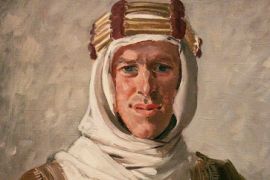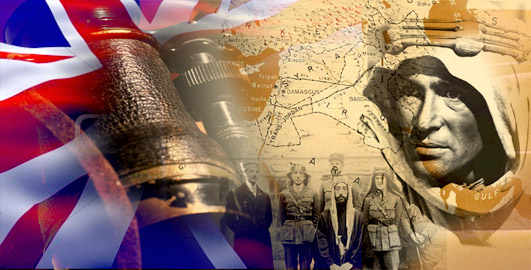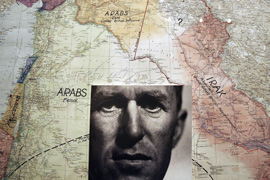A warrior of Arabia
T.E. Lawrence firmly believed in Arab self-rule and even killed for it.

 |
| Lawrence perfected the art of desert guerrilla warfare, which defeated the Turks |
Thomas Edward Lawrence, a British army captain in the Middle East theatre of operations against the Ottomans in World War I, is a legend among Arab historians.
Nicknamed Lawrence of Arabia, he was considered by the West to be the leader of the Arab revolt against Ankara. To the Arabs, and to the family of Sherrif Hussein ibn Ali, governor of the Hejaz, Lawrence was an Arab patriot and cunning warrior.
Immortalised in David Lean’s influential 1962 epic, Lawrence is credited with inspiring a feverish Arab nationalism, but in the past few decades his significance had waned somewhat.
It would not be until well into the US invasion and occupation of Iraq that Lawrence’s role in fomenting Arab nationalism and military tactics would return to the fore.
Attrition and sabotage
Having dedicated his boyhood fantasies to mastering the tactics of medieval warfare, including siege paradigms, Lawrence can be credited with formulating a blueprint of guerrilla warfare used in Lebanon, Palestine, Iraq, Algeria, Sudan, and Yemen.
In Iraq, for example, US military commanders have always complained that Iraqi armed groups retreat – almost disappear – immediately after an attack on their forces.
 |
This was a tactic perfected by Lawrence when he led attack after attack on Ottoman supply convoys and trains, fuel depots, military and communications installations in Transjordan and Syria in 1916.
One minute the Arab fighters would be there killing Ottomans with ferocious intensity. And then … gone. The Ottomans would be left with no one to pursue.
Lawrence did not believe that his undertrained Arab fighters could take on the might of the Ottoman Empire head on. As a result, he sought a drawn out war of attrition, slowly and systematically draining the Ottomans of their supplies, morale and will to fight.
Indirect approach
B.H. Liddell Hart, a British military historian, said Lawrence was a master of the “indirect approach”.
In his book Strategy, Hart wrote of Lawrence’s military acumen:
“This campaign was the Arab Revolt, with Lawrence as its guiding brain. While it comes into the category of guerrilla warfare, its strategy had such a scientifically calculated basis that we should not miss its reflection on normal warfare.
“The Arabs were both more mobile and less able to bear casualties than orthodox armies. The Turks were almost insusceptible to loss of men but not to loss of material – of which they suffered a scarcity. Superb in sitting tight in a trench, firing at a directly oncoming target, [Turks] were neither adaptable to, or able to endure the strain of, fluid operations.”
Hart concluded that the Arab Revolt was the first entirely successful use of guerrilla warfare in World War I.
Betrayal and sadness
 |
| Lawrence in front of a newly discovered peace map at the Imperial War Museum [GETTY] |
Lawrence believed in the vision of Sherrif Ali in creating a unified Arab state. But he was torn between his loyalties to Britain and his new adopted homeland. He was aware of the Sykes-Picot agreement which carved up the Middle East between colonial powers and was strongly against it.
At the 1921 Cairo Conference, Lawrence was an adviser to Winston Churchill, who was Britain’s secretary of state for the colonies at the time. He urged Britain to rethink its approach to the Arabs.
But his pleas fell on deaf ears.
He withdrew from social and military circles, feeling personally responsible for misleading the Arabs.
In the years before his death, he wrote of his adventures and use of military strategy in the celebrated book, Seven Pillars of Wisdom.
The book has in recent years risen to new prominence.
In 2006, US General David Petraeus ordered his senior officers to master the book as it could help them understand the mindset of the Iraqi resistance.
Excerpts from the book are quote in the 2006 US Army Counterinsurgency Field Manual.
Lawrence died in a motorcycle accident in 1935.